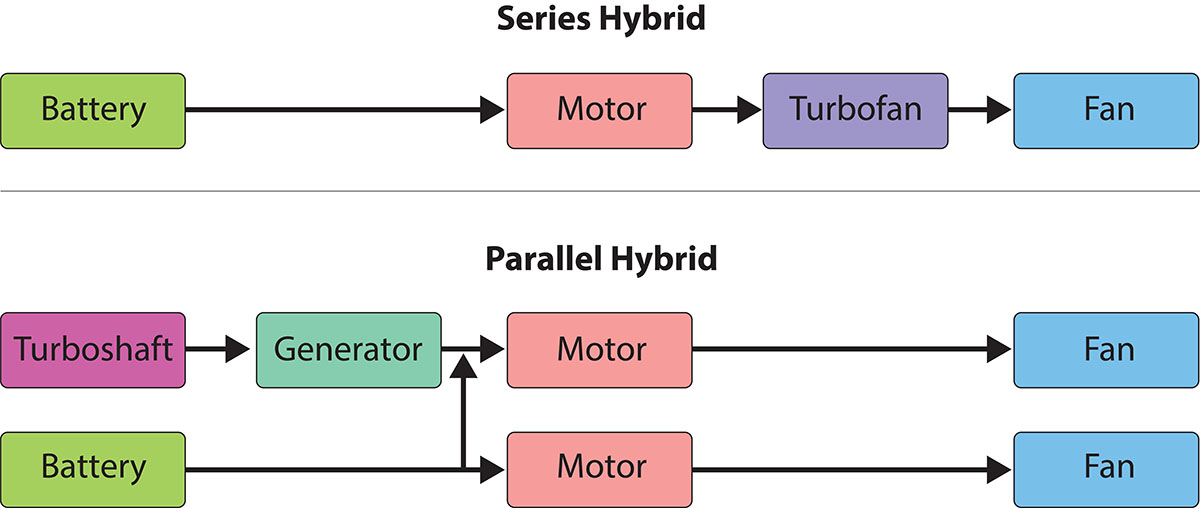Franck Plouraboué, Senior Scientist CNRS, Fluid Mechanics Institute of Toulouse, discusses how making improvements on aircraft propulsion can solve major issues and make significant advances in the future
Airplane transportation has been around for a century which is a very small period compared to the time humans have inhabited the earth. Yet, the number of commercial flights exceeded four billion last year. Over the last decade, the number of flights has increased by about 6% each year without any sign of decline. Compared to the world population growth rate, which is about 1.1%, the increase in air transportation is close to six times faster. Keeping with these rates, in about fifteen years, there will be as many flights per year as people on earth. The aircraft industrys contribution to CO2 atmospheric pollution is expected to increase as aviation fuel consumption continues to grow.
Air transport accounts for about 2% of the present global carbon footprint. It will likely reach 5% in fifteen years. This percentage might become even greater as the gap narrows between the use of the electric motor and the traditional internal combustion engine to power terrestrial transport. Given these perspectives, how can existing technologies help lower the negative environmental impact of air transportation?
Aircraft propulsion achievements
One should first consider the thrust specific fuel consumption (TSFC), a figure of merit for quantifying aircraft propulsion efficiency and frugality. TSFC represents the thrust produced by the engine divided by the rate of fuel flow, i.e. the mechanical propulsion divided by its chemical cost in fossil energy. For both jet engines and turbo-propulsion systems, it has only improved by a meagre 20% over the last twenty years.
Another figure of merit is the propulsion efficiency (PE) providing the ratio between the propelling power and the rate of energy consumption. Disregarding turbo propulsion for being less efficient at high altitude than turbofans or jet engines, the propulsive efficiency is merely improved by 20% in most recent evolutions either associated with an installed gearbox to slow down fan speed or more traditional design optimisations. Both improvements in TSFC and PE illustrate that, with a 6% increase each year over the last two decades, reaching a total of 70% build up in CO2 emission as well as fuel consumption, a 20% gain in efficiency is just not enough. Small incremental improvements in this necessarily conservative domain of science and technology – being cautious of passenger security does not offer enough perspective to solve for the needs.
Innovative perspective for aircraft propulsion
There might be significant technological progress in the area of fuel engines propulsion associated with the economy of fossil energy usage. Innovative gas injection systems, such as plasma’s igniters (using a dedicated plasma spark for better initiation and control of the internal combustion in engines), hydrogen fuel enhancement (using a mixture of hydrogen and conventional fuel inside combustion engines to improve power output and emissions), can be listed as possible tracks for progress expected in the area. Even though difficult to predict, the gain expected in propulsion efficiency in the next decade resulting from these innovative technologies will probably be incremental.
But airplane propulsion progress is not just about improving engines. The aircrafts themselves might gain efficiency from innovative strategies to improve aerodynamic performances. Lowering the hydrodynamic drag (the friction force exerted by air on the aircraft) can be obtained using various smart improvements. Improved wing design has recently been used and deployed on commercial airplanes. Boundary layers control to delay or partially remove their detachment (boundary layer of the airflow are regions where viscous effects are important, the stability of which lowers the overall drag), either using actuated mechanical systems or pulsed air-jets actuators are valuable concepts albeit only currently in the prototype stage. Even promising, performance gains from these new systems will most probably be incremental.
The need for a disruptive strategy to lower fossil energy use as well as the carbon footprint of air transport has recently turned toward electric propulsion. Of course, some caution has to be taken, electric propulsion is not 100% green – the manufacturing processes around high-density batteries are a long way off from being environmentally friendly.
Nevertheless, as far as fossil fuel and carbon footprint reduction are concerned, this is almost certainly the best choice. Many projects are now taking this route: small aircraft equipped with full electrical propulsion, or, for larger ones, co-propulsive systems. Co-propulsion is a general concept combining electric-power and fuel-based power systems. It covers hybrid-electric engines architectures (Cf Figure) or turbo-electric ones (for which turbo-shaft generated energy is transformed into electrical energy to drive – possibly multiple – distributed electric motor-driven fan(s)).
From this, one can realise that electric co-propulsion is not as disruptive as previously stated, but will, most probably, be implemented through step-by-step adoption in combination with existing aircraft systems. Of course, one key aspect for the future improvements of electric propulsion in air transport is the ability to enhance battery storage capacity, density and security. Since ground-based electrical transport is facing the same challenge, it is possible to expect synergetic efforts providing significant progress to this electric storage capacity bottleneck.
Last, but not least, albeit at a very early stage, ionic wind propulsion is an interesting new topic worth considering. Subjecting charged molecules to an electric field in air, accelerates them and produces collisions with neutral molecules so as to transfer their momentum and finally produce ionic wind. This wind can propel. Disregarded for being inefficient in the 1960s, scientists have recently discovered that this efficiency could in fact drastically be improved at commercial flight speed. Ionic wind propulsion is, therefore, an additional option for electric propulsion in the air, currently in its infancy, but a promising option nonetheless.
In conclusion, the constant increase in air transport raises new challenges. Here, we have covered current aircraft transport improvements showing that they can potentially help in solving some of the main issues. We also highlighted more recent progress which might permit major advances in the future.
Please note: This is a commercial profile
Franck Plouraboué
Senior Scientist CNRS
Fluid Mechanics Institute of Toulouse
(IMFT UMR 5502 INPT-CNRS-UPS)
Tel: +33 3432 2880












